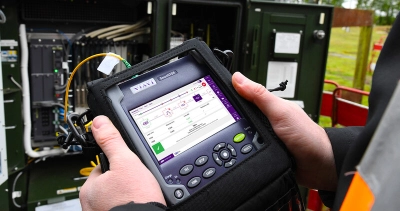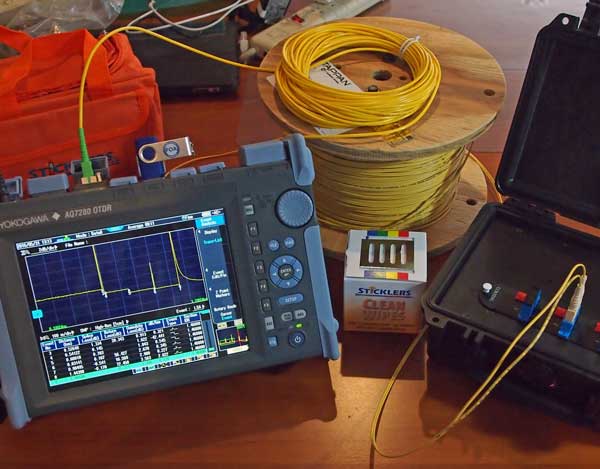Barriers manufacturers face when implementing robotic vision systems
Recognizing Exactly How an Optical Measurement System Boosts Accuracy in Industrial Applications
Optical measurement systems play a vital function in boosting accuracy across numerous industrial applications. By leveraging sophisticated technologies such as laser interferometry and 3D imaging sensors, these systems use high-resolution, non-contact dimensions. This capacity decreases the risk of damaging delicate components while guaranteeing precision. The influence of these systems prolongs past plain dimensions. Exploring their advantages, applications, and future trends discloses a complex landscape of development and difficulties that benefits more detailed assessment.
The Fundamentals of Optical Measurement Systems
Optical measurement systems work as vital devices in numerous industrial applications, supplying exact data collection and evaluation. These systems make use of light as a primary means of measurement, leveraging optical concepts to assess dimensions, placements, and surface characteristics of objects. They integrate elements such as lasers, electronic cameras, and sensing units, which interact to capture high-resolution pictures and data.
The technology allows non-contact dimensions, lessening the danger of damaging delicate elements. Optical measurement systems are flexible, discovering utility in quality assurance, setting up confirmation, and dimensional evaluation across different markets. They are particularly effective in settings where typical measurement strategies might fail, such as measuring complicated geometries or observing fast movements.
As markets remain to progress, the integration of optical measurement systems will remain critical for making certain accuracy and efficiency, inevitably boosting product high quality and functional efficiency in different manufacturing procedures.
Secret Technologies Behind Optical Measurement
Key technologies such as laser interferometry strategies and 3D imaging sensors play an essential role in the performance of optical measurement systems (optical measurement system). These innovations enable specific dimensions and detailed analysis in numerous industrial applications. Recognizing their functionalities is crucial for utilizing the complete capacity of optical measurement systems
Laser Interferometry Techniques
Numerous laser interferometry methods have actually revolutionized the area of optical measurement, offering extraordinary accuracy and accuracy in numerous industrial applications. These techniques use the interference of coherent light waves to determine distance, variation, and surface irregularities with nanometer-level accuracy. Typical approaches include Michelson interferometry, which divides a beam and analyzes phase changes, and Fabry-Pérot interferometry, known for its high resolution in gauging tiny adjustments. In addition, laser Doppler interferometry utilizes frequency shifts to assess rate, making it invaluable in vibrant measurements. The adaptability of these strategies enables their combination right into diverse manufacturing procedures, enhancing top quality control and making sure adherence to strict resistances. Consequently, laser interferometry remains to play an essential duty beforehand commercial measurement requirements.
3D Imaging Sensors
Advancements in measurement innovation have resulted in the development of 3D imaging sensing units, which play a considerable function in optical measurement systems. These sensing units capture three-dimensional data via different methods such as triangulation, time-of-flight, and structured light. By precisely reconstructing the form and dimensions of things, 3D imaging sensors enhance the accuracy of measurements in commercial applications. They provide real-time comments, promoting quality assurance and guaranteeing that parts meet strict requirements. In addition, their capacity to operate in challenging settings, such as varying illumination problems, makes them very useful in making procedures. As industries progressively adopt automation, the assimilation of 3D imaging sensing units into optical measurement systems is expected to drive more enhancements in performance and accuracy.
Benefits of Optical Measurement in Industry
Traditional measurement methods have long been the criterion in industrial setups, optical measurement systems offer significant advantages that improve accuracy and performance. These systems utilize light to capture data, resulting in high-resolution dimensions that are usually unattainable with standard techniques. The non-contact nature of optical dimensions decreases the risk of damaging delicate elements during the analysis process. Additionally, the speed of optical measurements enables fast data purchase, facilitating prompt decision-making in fast-paced commercial settings.
Optical systems are versatile, efficient in measuring different products and shapes without the requirement for considerable recalibration. This flexibility adds to improved process and productivity. In addition, the automation potential of optical measurement systems minimizes human mistake, guaranteeing constant top quality control. In general, the assimilation of optical measurement innovation represents a dynamic change towards improved precision and integrity in commercial operations, ultimately bring about enhanced item high quality and functional performance.
Applications of Optical Measurement Systems

Optical measurement systems play an essential role in improving production procedure optimization by supplying accurate information for decision-making. These systems guarantee quality assurance assurance through real-time tracking and analysis of manufacturing metrics. As industries significantly take on these innovations, their influence on performance and product reliability ends up being evident.
Manufacturing Process Optimization
Enhancing production process efficiency is increasingly dependent on the integration of optical measurement systems. These systems offer real-time information on various parameters, permitting makers to analyze procedures with a high degree of accuracy. By allowing accurate dimensions of measurements, surface qualities, and product residential or commercial properties, optical measurement systems promote the identification of ineffectiveness and bottlenecks in assembly line. The prompt feedback from these systems empowers designers to make educated decisions, causing optimized machining, assembly, and ending up processes. Moreover, the ability to monitor problems continuously enables adaptive modifications, lessening downtime and waste. As sectors go for better performance and lowered functional prices, optical measurement systems emerge as essential devices for enhancing production process optimization.

Quality Assurance Assurance
The assimilation of optical measurement systems significantly effects quality control assurance in commercial setups. These systems supply specific and non-destructive dimensions, enabling producers to spot issues and inconsistencies early in the manufacturing process. By making use of innovative imaging methods, such as laser triangulation and interferometry, optical measurement systems guarantee that elements meet stringent specs. This promotes real-time tracking, reducing waste and minimizing the threat of defective items getting to the market. In addition, the information accumulated can be analyzed to improve manufacturing processes additionally, resulting in continuous improvement. Inevitably, the fostering of optical measurement systems enhances reliability and uniformity in quality assurance, cultivating higher self-confidence amongst stakeholders and customers alike in the end products provided.
Situation Studies: Successful Applications
Various industries have effectively incorporated optical measurement systems to improve their operational effectiveness and product top quality. For circumstances, in the auto market, a noticeable manufacturer adopted a laser triangulation system to check that check the placement of vehicle elements. This application greatly minimized assembly errors, resulting in boosted security and lowered costs.
In the aerospace industry, a leading aircraft producer utilized optical width for precision dimensions of wind turbine blades, accomplishing a decrease in making resistances and far better performance requirements.
In a similar way, a customer electronic devices company executed optical measurement modern technology throughout the manufacturing of smart device screens, causing enhanced quality assurance and a decline in malfunctioning items.
These situation research studies show exactly Clicking Here how optical measurement systems not only enhance precision but additionally add to total functional effectiveness, showing their value throughout different industries. By dealing with specific needs, these systems have actually confirmed to be essential devices in contemporary commercial applications.
Challenges and Limitations of Optical Measurement
While optical measurement systems supply substantial benefits in numerous industrial applications, they are not without their challenges and restrictions. One significant issue is level of sensitivity to ecological problems, such as temperature variations, humidity, and dirt, which can adversely affect measurement precision. Furthermore, optical systems typically require specific placement and calibration, making them vulnerable to human mistake throughout arrangement and procedure. One more limitation is the potential for interference from ambient light, which can distort measurements and demand intricate filtering techniques. Furthermore, specific products and surfaces might present difficulties, as reflective or clear attributes can lead to irregular readings. The price of premium optical parts and systems can likewise be a barrier for some markets, limiting prevalent fostering. Lastly, specialized training is frequently required for personnel to successfully operate and preserve these systems, including to the total complexity and operational challenges.
Future Trends in Optical Measurement Technology
As advancements in technology remain to form commercial procedures, the future of optical measurement systems is poised for considerable development. Arising patterns suggest a change towards boosted assimilation of man-made knowledge and artificial intelligence, making it possible for systems to analyze data in real-time, identify patterns, and improve decision-making procedures. In enhancement, the advancement of miniaturized sensors and advanced optics is expected to result in more small and functional measurement services, making them accessible for a bigger variety of applications.
Furthermore, the incorporation of 3D imaging and high-resolution capacities will enable unmatched accuracy in measurements, which is essential for sectors such as aerospace and vehicle. The push for automation and Market 4.0 will certainly also drive the demand go to my blog for optical measurement systems that can conveniently user interface with various other technologies. As these trends unravel, optical measurement systems will likely become integral to accomplishing better efficiency and accuracy throughout various commercial industries.

Regularly Asked Inquiries
Just How Do Optical Measurement Systems Contrast to Conventional Measurement Approaches?
Optical measurement systems use greater accuracy and speed contrasted to standard methods - optical fibre diameter analyser. They reduce human error, improve information collection performance, and offer real-time results, making them significantly liked in different industrial applications for specific dimensions
What Industries Benefit one of the most From Optical Measurement Systems?
Optical measurement systems significantly profit industries such as aerospace, auto, and electronic devices. Their ability to supply high-precision measurements improves high quality control, decreases production errors, and enhances overall effectiveness, making them crucial in competitive production settings.
Can Optical Measurement Systems Be Customized for Certain Applications?
Optical measurement systems can certainly be tailored for certain applications. By changing specifications such as wavelength, resolution, and calibration techniques, markets can customize these systems to meet distinct accuracy and precision demands efficiently.
What Is the Upkeep Demand for Optical Measurement Systems?
The maintenance requirements for optical measurement systems normally include normal calibration, cleansing of optical elements, and software program updates. Complying with these techniques guarantees accuracy, dependability, and durability of the measurement tools in various applications.
How Do Environmental Elements Influence Optical Measurement Accuracy?
Ecological aspects, such as temperature level changes, humidity, and dust, significantly influence optical measurement precision. These elements can misshape light courses and hinder sensing unit analyses, eventually endangering the integrity and accuracy of dimensions in commercial setups.